
November Garden Guide
Note: This is general information for the entire state of Arkansas on what to plant in your garden in November. For specific questions about planting in your area, please reach out to your local county agent.
Autumn is in full swing this month! Falling leaves and chilling temps are a clear sign that November is here. Our yards and gardens are changing and getting ready for the winter months.
To start spring off strong, we can do several things this month that will prepare us for next year. Get your rake handy, and let's winterize our gardens!
Garden Chores for November
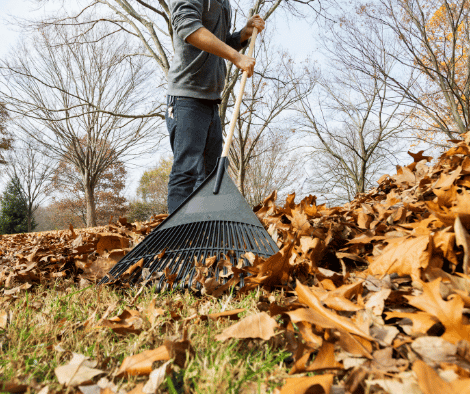
As your garden is transitioning from active to dormant this month, it is time to winterize our yards and prepare for the spring. Check out what chores we recommend doing in November:
- Move or plant any trees, shrubs, or perennials that need transplanting.
- Plant winter annuals.
- Plant spring-flowering bulbs.
- Apply and incorporate compost into soil.
- Rake leaves, if desired. Leaves should be collected as they fall to avoid covering plants and grass you want to keep healthy. Throw leaves into a compost pile or use them as mulch for your plants.
- Clean and sharpen or replace lawn mower blades.
- Get your soil tested by bringing a sample in to your county extension office, if you have not already done so.
- Make soil amendments based on your soil sample test results and recommendations from your county extension office now to prepare for gardening in the spring.
- Winterize your garden and tools.
- Order seed catalogs for next year.
- Check and treat indoor plants for pests.
Winterize Your Garden: Fall Garden Clean-Up
Clean up your garden this month! If you leave your garden nice and healthy this fall, you will be off to a good start as the weather starts warming up in February. Fall garden clean-up can result in a healthier garden for next season by removing disease spores and insect eggs that will over-winter in plant materials.
As you remove plants and leaves from your garden, you can add them to your compost pile.
Check on your old mulch! Remove any diseased mulch and replenish your mulch as needed.
Winterize your garden by emptying any hoses and other irrigation tools and storing them away. Leaving them with water in them in freezing temperatures can damage your hoses and cause leaks next year.
You will also want to clean and disinfect your tools, such as your shovels, spades, hoes, and nippers with a bleach solution or disinfectant wipes, allow them to dry completely, and coat them in a light oil, such as mineral oil or linseed oil to protect the wood and keep the metal from rusting. Be sure to store all of your tools in a cool, dry place away from the elements.
You will also want to store any unsealed clay pots, as exposure to rain and freezing temperatures can cause them to crack.
To learn more about good garden sanitation, visit this article on How to Sanitize Your Garden.
Winterizing your water garden: Don't let your pond or water garden get covered with decaying leaves. To avoid this in the fall and winter, cover you pond with bird netting to catching falling leaves, as buildup can result in dying fish. You may also wish to install a stock tank heater in a small, shallow pond to prevent the water from freezing over. As the weather cools, you will also want to stop feeding your fish, as they're not able to metabolize food in winter months.
To Rake, or Not to Rake? What to Do with Fall Leaves
Leaves do provide shelter for pollinators and other small creatures in the ecosystem; however, excessive leaf matter can smother plants and should be removed.
Putting leaves into plastic bags and sending them to landfills is not good for the environment, so you will want to find an alternative way to deal with those leaves. You will also want to avoid blowing leaves into the street or near storm drains.
What to do with excessive leaves: Leaves can be raked into a dedicated space in your yard, added to a compost pile, or used as mulch around your ornamental shrubs. You may also want to shred your leaves, as this helps them decompose faster.
Learn more about raking leaves in this article, "Do You Really Need to Rake Leaves?".
November Vegetable Planting Guide
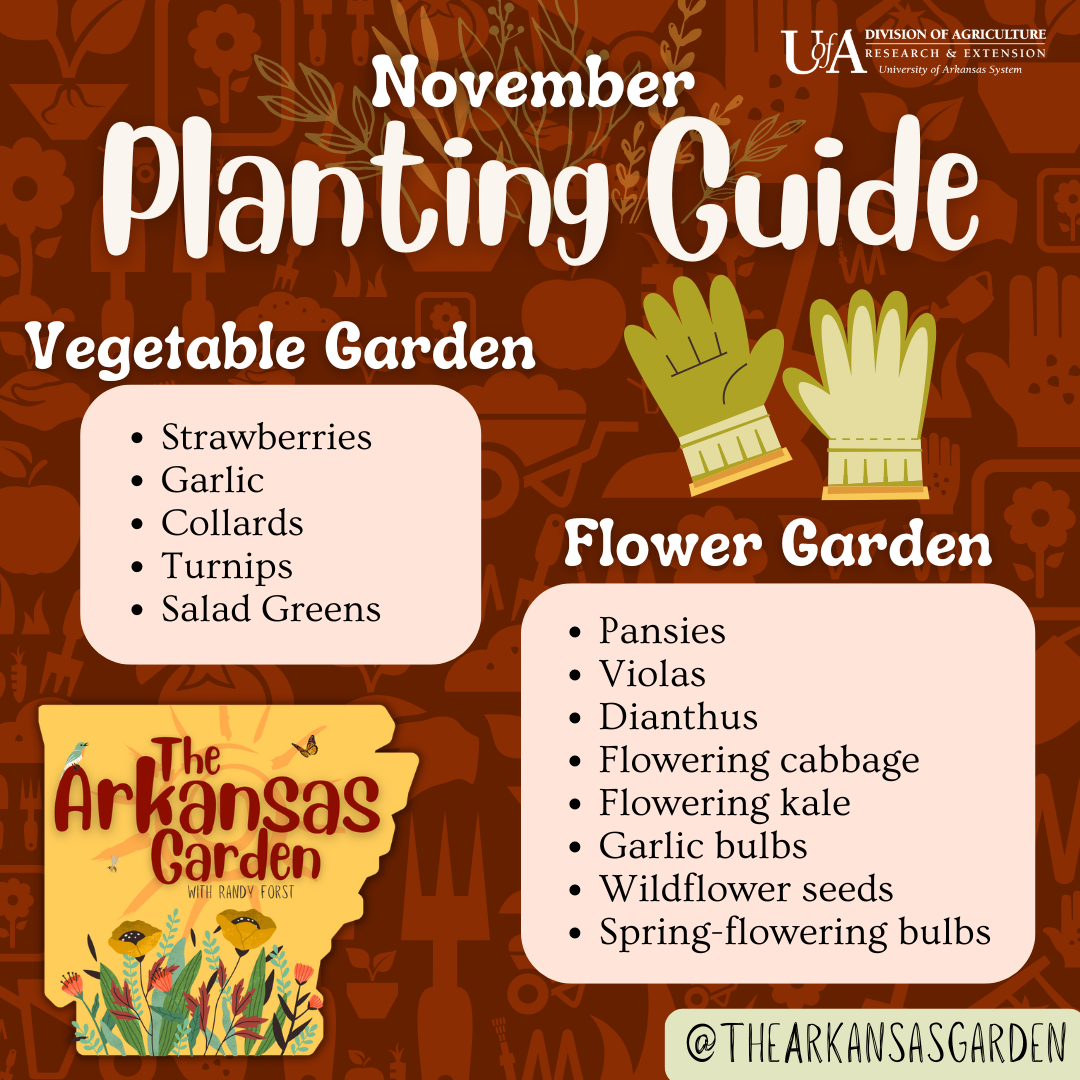
It's time for cool-season vegetables! Below is a list of vegetables you can plant in your yard in November:
- Strawberries
- Garlic
- Collards
- Turnips
- Salad Greens
Harvest your asparagus at this time by cutting the tops off the plants to about 3–4 inches above the soil.
Cover cool-season vegetables if the temperature drops below 28°F to keep them warm. In a pinch, you can use an overturned box or large flower pot to cover your plants. If there is an extended time that the temperature has dropped, be sure to give your plants some sunlight during the day.
November Flower Planting Guide
November is the time to plant your winter annuals! Find our recommendations for what to plant this month below:
- Pansies
- Violas
- Dianthus
- Flowering cabbage
- Flowering kale
- Garlic bulbs
- Wildflower seeds
- Spring-flowering bulbs
Tips for Spring-Flowering Bulbs
Do you want those gorgeous spring flowers in your yard, like hyacinth, tulips, daffodils, and crocuses? Better get to planting! You have until the middle of December to plant these lovely springtime spectacles.
Spring-flowering bulbs need chilling time, so don't wait too long to plant them. As a general rule of thumb, plant your bulbs 2x or 3x the depth of their diameter. For example, if your bulb has a one-inch diameter, plant it 2-3 inches deep.
If your spring-blooming bulbs start producing earlier than expected, do not disturb them. Bulbs have only one set of leaves, flowers and roots, and damaging these can damage the bulb.
Download our Fall Bulbs publication to learn more about planting fall bulbs
Transplanting Trees, Shrubs, and Perennials
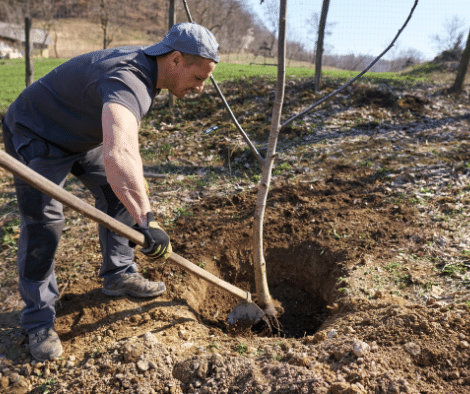
Move any trees or shrubs that need to be transplanted at this time. Divide and/or transplant any perennials as they begin to decline. Fall is the best time to do this as the winter gives them ample time to establish good roots. Do this on a day that isn't too cold, and don't expose the roots to the air for too long. Have a new hole dug and ready before you dig up and transplant your plant.
If you are wanting to plant a new tree, November is the most ideal time to do that so the plant has time to establish a healthy root system instead of putting its energy into producing the branches and leaves. When choosing a tree for your yard, consider the tree's mature size, the color of fall foliage, and location in your yard. Be sure to avoid planting a tree under powerlines or too close to your house or other building. Check out our resources on Fall Tree Care and Planting Tips for more info on planting trees in your yard.
Download our Planting a Tree or Shrub publication
Don't Prune Roses in November
Roses do not need to be pruned at this time of year. Pruning them now can result in them dying back over the winter. Instead, make sure to mulch them well, and build the mulch up past the graft for protection during the cold months ahead.
In Bloom in November

Aster
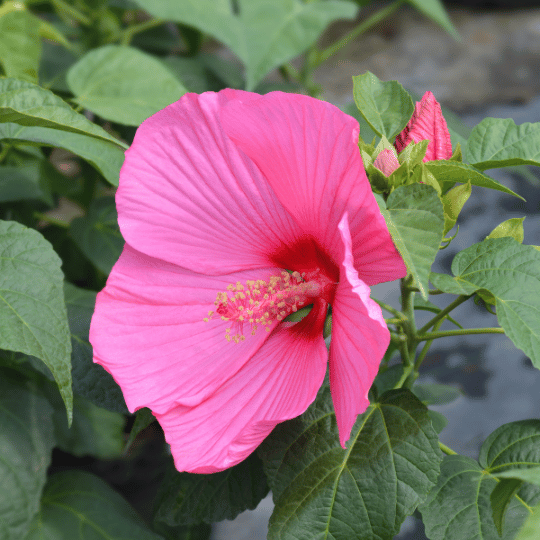
Hardy Hibiscus
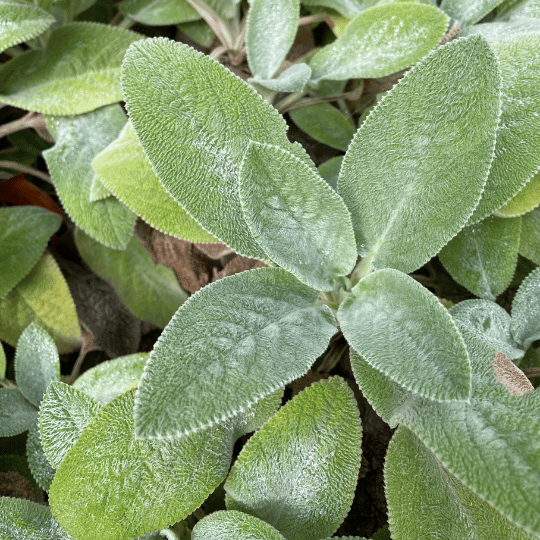
Lamb's Ear
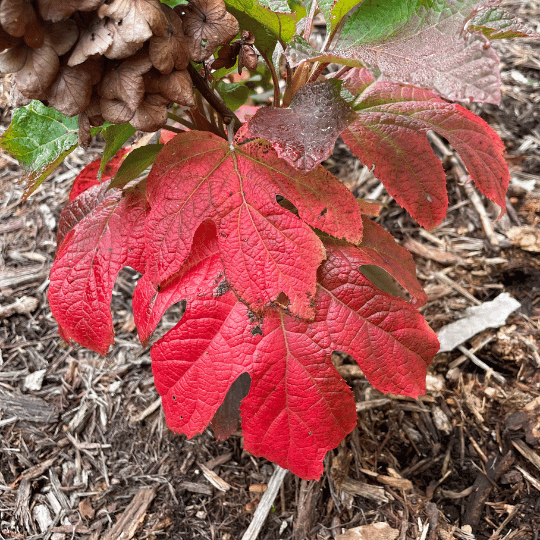
Oakleaf Hydrangea
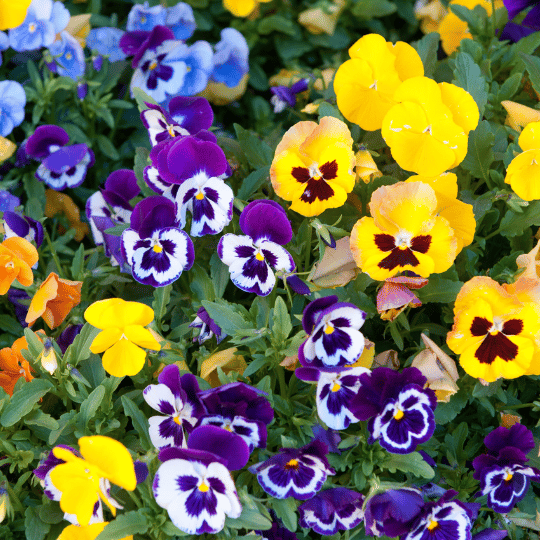
Pansy
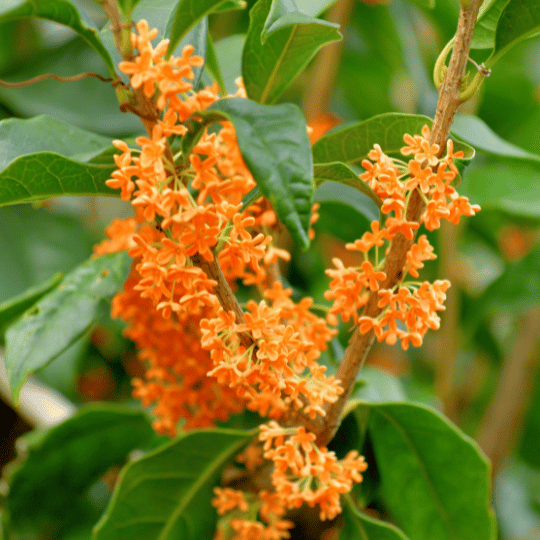
Sweet Olive
January | February | March | April | May | June
July | August | September | October | November | December

